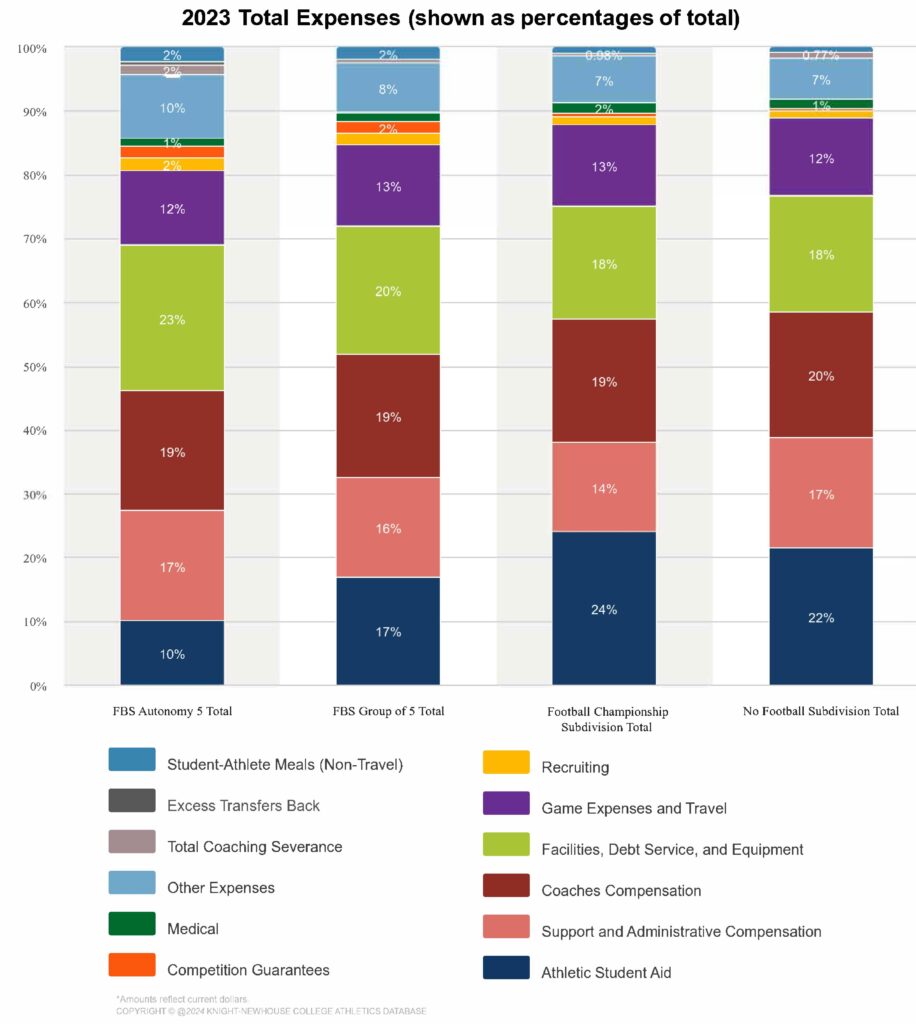Rising expenses in college athletics have become a significant factor in the broader conversation about higher education affordability, raising concerns among students, families, and policymakers alike. As athletic departments across the country face escalating costs-from facility upgrades to coaching salaries-the financial burden often trickles down to the student body through increased fees and diverted resources. This article explores how the growing price tag of college sports is not just a matter of budget line items but a pressing affordability issue that challenges the accessibility and sustainability of the collegiate experience.
Rising Expenses Strain College Budgets and Student Finances
As college athletic programs expand, institutions face escalating operational costs that ripple through every corner of campus budgets. Expenses such as coaching salaries, facility upgrades, travel, and scholarships have surged well beyond initial projections, forcing many universities to divert funds from academic programs or increase student fees. This financial strain disproportionately affects public colleges and smaller institutions that lack lucrative media contracts or donation streams to offset growing deficits.
Students and their families are feeling the pinch more acutely than ever. Beyond tuition hikes, many face additional mandatory fees specifically earmarked for athletics, compounding the overall expense of higher education. In response, some institutions have adjusted their budget priorities, but these reallocations often reduce support for academic resources and student services, highlighting a trade-off that raises serious questions about the sustainability and fairness of current spending models.
- Coaching salaries: Increased by 35% over the past five years nationally
- Facility improvements: Average annual spending up 20%
- Student athletic fees: Rising by an average of $150 per semester at many public universities
| Cost Category | Five-Year Increase (%) | Impact on Budgets |
|---|---|---|
| Coaching Staff Salaries | 35% | High |
| Facility Maintenance | 22% | Moderate |
| Travel Expenses | 18% | Moderate |
| Student Fees | 15% | Direct Impact |
Impact on Access and Equity for Low-Income Athletes
The financial burden of participating in college athletics disproportionately affects low-income athletes, often forcing them to choose between their sport and their academic aspirations. Despite scholarships covering tuition and some expenses, many hidden costs such as travel, equipment, and living expenses remain unaddressed. These out-of-pocket requirements can create significant barriers, limiting access to opportunities that more affluent peers take for granted. As a result, talented athletes from lower socioeconomic backgrounds are less likely to remain in collegiate sports, reducing the diversity and inclusivity of athletic programs nationwide.
Moreover, these financial obstacles extend beyond the playing field, influencing long-term educational outcomes and career prospects for economically disadvantaged students. Institutional policies that fail to consider comprehensive support measures-like stipends for incidental costs or flexible payment plans-widen equity gaps within college athletics. Consider the following disparities in average out-of-pocket costs for athletes across income brackets:
| Income Level | Average Annual Extra Expenses | % Reported Financial Stress | |||||||||||||||||||||
|---|---|---|---|---|---|---|---|---|---|---|---|---|---|---|---|---|---|---|---|---|---|---|---|
| Low-Income (<$30K) | $3,200 | 78% | |||||||||||||||||||||
| Middle-Income ($30K-$75K) | $1,800 | 43% | |||||||||||||||||||||
| High-Income (>$75K) | $750 |
| Budget Category | Annual Spending | Potential Impact |
|---|---|---|
| Athletic Programs | $15 million | Visibility & limited student access |
| Academic Enhancements | $10 million | Improved learning & higher retention |
| Student Support Services | $7 million | Greater equity & mental health aid |
Rethinking financial priorities doesn’t mean eliminating athletics but rather finding a sustainable balance that champions affordability and academic success. Strategic reallocations, paired with transparent budgeting, empower colleges to reaffirm their commitment to students’ long-term futures over short-term athletic prestige.
Policy Changes Needed to Make College Sports More Affordable
To address the rising costs burdening student-athletes and their families, policymakers must rethink funding structures within collegiate sports programs. One critical step involves increasing transparency around athletic department budgets, especially regarding revenue allocation for non-revenue sports. Enhanced oversight could ensure funds are directed toward scholarships, healthcare, and essential academic support rather than costly facilities or marketing campaigns. Furthermore, introducing caps on spending for athletic programs relative to overall university budgets could help prevent disproportionate expenditures that directly impact affordability and access.
Additionally, expanding financial aid options tailored specifically for athletes, including need-based grants and sliding scale scholarships, would alleviate financial pressures without compromising athletic commitments. Implementing a standardized model for distributing these funds across Division I, II, and III schools could foster fairness and reduce disparities. Below is a simplified outline of key policy proposals being debated among higher education experts:
- Budget transparency mandates: Regular public reporting of athletic revenues and expenses.
- Spending caps: Tying athletic budgets to a fixed percentage of total university funding.
- Expanded financial aid: Creation of athlete-specific, need-based scholarships.
- Support services funding: Guaranteed access to mental health and career counseling resources.
| Policy Proposal | Expected Impact |
|---|---|
| Budget transparency mandates | Improved accountability and resource distribution |
| Spending caps | Balanced investment across sports and academics |
| Expanded financial aid | Increased affordability for lower-income athletes |
| Support services funding | Better athlete well-being and academic outcomes |
The Conclusion
As debates over college affordability continue to dominate higher education discourse, the escalating costs associated with college athletics remain a critical, yet often overlooked, factor. Balancing the financial demands of athletic programs with the broader mission of accessible education requires renewed scrutiny and policy consideration. Addressing these expenses is essential if institutions aim to make college truly affordable for all students.





